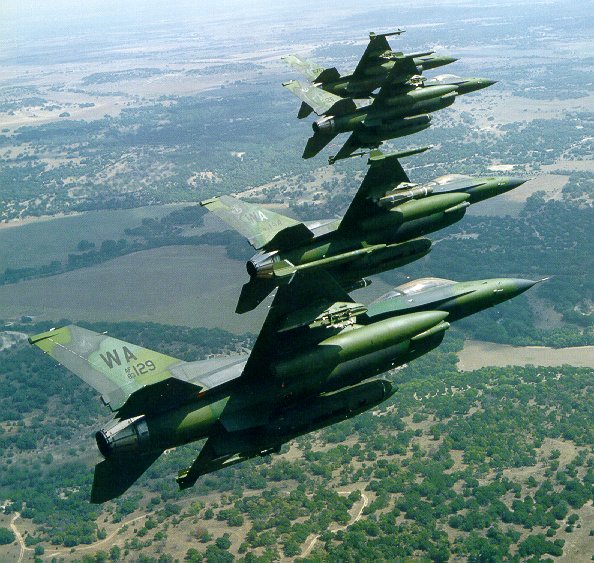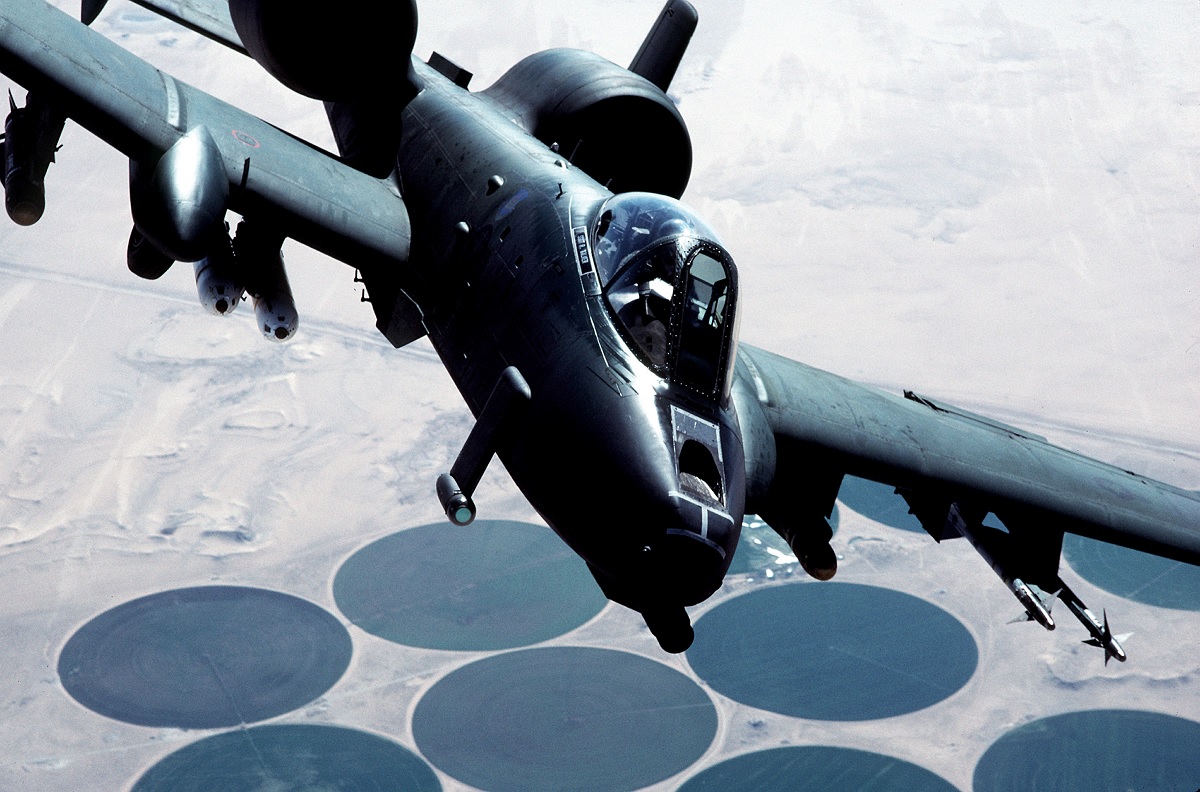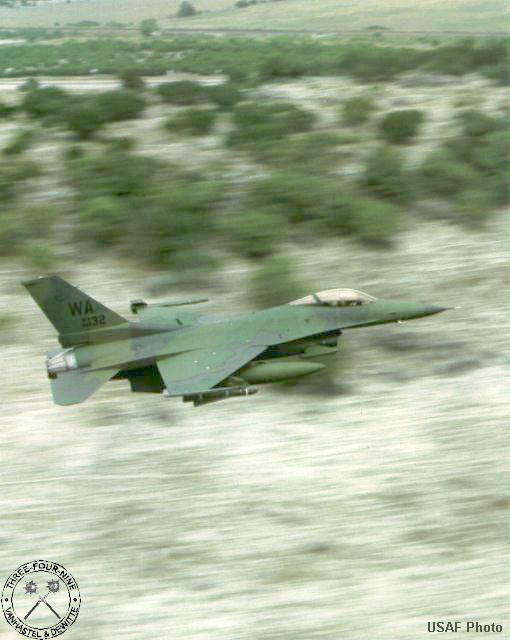Due to the F-16’s severe vulnerability to ground fire down low during Desert Storm, the A-10 performed better in the CAS role
The U.S. Air Force (USAF) began work on the A-16, close air support (CAS) derivative of the basic F-16 armed with a 30 mm cannon and 7.62 mm Minigun pods, in the 1980s in an effort to replace the A-10 Thunderbolt II. A number of F-16A Block 15 aircraft were upgraded to this configuration and painted in the “European One” camouflage pattern. The A-16 was never produced because of a Congressional directive issued to the USAF on November 26, 1990, requiring it to keep two wings of A-10s. The type was to have been given the name “Block 60.”
The USAF decided to upgrade 400 Block 30/32 F-16s with new equipment to execute CAS and battlefield air interdiction (BAI) operations rather than upgrading the A-10 as the second result of that instruction. The F/A-16 project included innovative technology such as a digital terrain-mapping system, a GPS for better navigational and weapon delivery precision, and an Automatic Target Handoff System (ATHS) to enable direct digital target/mission data interchange between the pilot and ground forces. But in January 1992, this strategy was abandoned in favor of installing Low Altitude Navigation and Targeting Infrared for Night (LANTIRN) pods on Block 40/42 F-16C/D aircraft.

The 174th Tactical Fighter Wing (TFW), a New York Air National Guard unit that switched from the A-10 in 1988, had 24 F-16A/B Block 10 aircraft that were equipped with the 30 mm GAU-13/A four-barrel variant of the seven-barrel GAU-8/A cannon in 1991. On the centerline station, this weapon was kept in a General Electric GPU-5/A Pave Claw gun pod and had 353 rounds of ammo. There were also plans to equip A-10s with the AN/AAS-35V Pave Penny laser spot tracker and convert F-16C aircraft to this configuration. Trials were put on hold after two days due to the gun’s considerable vibration, which made flying and targeting the aircraft challenging.
During Operation Desert Storm, when both aircraft were heavily employed in the conflict and significant data on their success rates in various types of missions was available, the A-10 vs F-16 argument was reignited. The Block 10 F-16 possessed the benefit of speed and full night capability, whereas the A-10 required the employment of flares to light up the battlefield or a second A-10, as recounted by Ken Neubeck in his book A-10 Warthog Mini In Action.
Nevertheless, despite these benefits, the F-16 performed worse than the A-10 in Desert Storm in the CAS role, largely because it was more open to ground fire down low. The F-16 was compelled to fly at higher altitudes because it lacked the A-10’s tough survival features. The Maverick missile and gun strafing capabilities of the A-10 were more precise than the F-16’s weaponry at higher altitudes. The F-16’s 30 mm gun pod attachment turned out to be unstable and inaccurate.

As Neubeck says “the war had proved conclusively that the modified F-16 cannot replace the A-10 Warthog and perform all aspects of the CAS mission. The A-10 was truly the only aircraft that was built solely for the CAS mission. Many experts feel that the results of the war show that the U.S. would do well to continue to have a mix of aircraft including the ‘air-to-mud’ types.”
The idea of replacing the A-10 with the F-16 was described by former Pentagon engineer Pierre Sprey, who worked on the F-16 and A-10 programs as “one of the most monumentally fraudulent ideas the Air Force has ever perpetrated.” As told by Neubeck, Mr. Sprey would later summarize the A-10’s war accomplishments in the September 1991 issue of the IEEE Spectrum (the magazine edited by the Institute of Electrical and Electronics Engineers). Sprey stated that “among the aircraft, the ‘low tech’ A-10 – much despised by the U.S. Air Force brass – was the real hero of the air war. Even though it represents only one-twelfth of the fighter force, it flew one-third of the sorties and accounted for two-thirds of the tank kills claimed during the air campaign and better than nine/tenths of the artillery kills. It dominated the interdiction campaigns against the roads. The aircraft proved tough enough to survive the anti-aircraft exposure and fire anti-tank Maverick missiles, while the F-16s, F-111s, and F-18s were just too vulnerable to ground guns to be usable in this role.”

Block 10 F/A-16s were eventually phased out as a result.
Photo by U.S. Air Force

